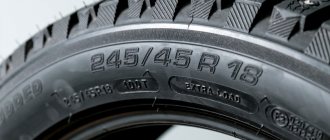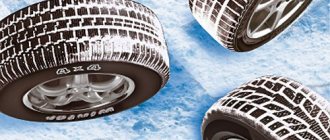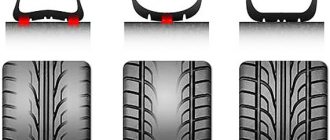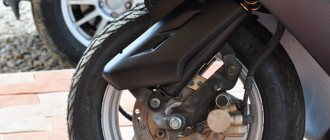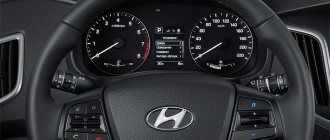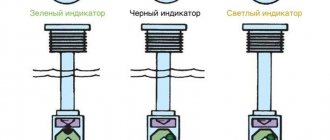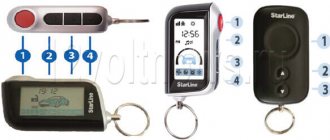When choosing and purchasing tires for a car, it is very important to understand what all these letters and numbers on the side surfaces of the tires, which are incomprehensible at first glance, mean. Without certain knowledge, it is simply impossible to make the right choice without resorting to the help of specialists. After all, it is these signs that contain the basic parameters by which, in fact, tires are selected.
Decoding the tire designation does not require any additional knowledge from the average buyer. To choose the right tires, you just need to know what size you need, as well as how and when they will be used.
Where to begin
The vehicle's owner's manual usually contains some recommendations for the correct selection of tires. This takes into account the type of wheels (steel or alloy), season of use (summer, winter), as well as the standard factory size. Naturally, not every driver adheres to such recommendations, which is why the car may be equipped with tires that, in terms of their parameters, do not meet the requirements of the manufacturer.
So it’s better to start by studying the standard requirements for tires of a certain brand of car. If you are satisfied with the type and size of the tires that are installed on the car, you simply need to rewrite all the existing designations.
What else should you pay attention to when choosing all-season tires?
Usually, all-season tires are determined by other criteria, and not just by markings, because a novice driver cannot fully remember all the necessary parameters, although visually selecting the optimal tire option is quite possible.
Unlike summer tires, all-season tires can be used at low sub-zero temperatures, but if there is severe frost, then all-season tires will be powerless against glass-smooth asphalt. Such tires can be identified both by weight and by touch. To do this, you just need to compare two samples in your hands. Summer tires will be much lighter than those that allow you to drive your car all year round.
At the same time, the composition of the all-season rubber compound will be much softer. To do this, just press the surface of the tire with your finger and wait a little. If the rubber compound, after such pressing, as well as after pressing with the palm, was pressed in and then straightened back out, but after some time, then it is worth thinking about the fact that in front of the person there is a truly real all-season tire.
Don't forget that all-season tires can be used at any time of the year. Although, on the other hand, experts are skeptical about this option of shoes for the car, since it does not carry any special characteristics.
Choosing a pair of good tires for summer and winter, which you can then change for each season, is, without a doubt, a more profitable and convenient option. After all, the car owner will feel confident on any type of road surface. But there is no extra money for storage, purchase and changing shoes, so you will have to use all-season tires.
We must not forget that at very high and very low temperatures, such rubber loses the properties of both summer and winter options. the length of the braking distance is disrupted - it is greatly reduced, irreversible processes occur with a pattern that in a matter of months turns into a completely bare wheel.
It is also important to remember that such rubber is manufactured in countries where winter usually passes as quickly as possible. During the rest of the year, you can often see slush, moisture, or even some ice on the roads. If all this is true, then all-season vehicles will last about 5 years.
Basic tire parameters: designations, markings
All inscriptions on tires are applied to the sidewalls on both sides. The main symbols on tires provide information about:
- manufacturer;
- standard size;
- speed index;
- load index;
- seasonality of use;
- date of manufacture.
In addition to these, there may be additional symbols on tires informing about:
- tire designs;
- tire type;
- the material from which the sidewall is made;
- maximum permissible pressure;
- direction of rotation;
- heat resistance;
- quality standard, etc.
Rain tires
Not everyone knows about this, but there are rain tires. These are a special type of summer tire that are better suited for driving on wet roads. Rain tires have a directional tread pattern and the rubber is made from silica. Rain tires prevent loss of traction on wet roads. It is worth noting that the mixture from which rain tires are made loses its properties in hot weather. Rain tires should not be used in sunny weather. Rain tires were produced for drivers in typically rainy climates.
Rain tire markings
Rain, Aqua, Water, Aquatred, Aquacontact or a painted umbrella are markings for rain tires, which means that the rubber is suitable for driving on wet roads.
Manufacturer information
Tire markings containing the manufacturer's name are printed on the sidewalls in large print. It is simply impossible not to notice it.
The manufacturer is the first thing you should decide on. Such popular brands as, for example, Nokian, Michelin, Dunlop, Yokohama, Pirelli, Continental, Bridgestone, do not need any introduction. The tires of these companies are known throughout the world due to their quality and reliability. But there are other manufacturers whose names few people know. In this case, you will need expert advice or a search for objective reviews.
All-season tires for passenger cars
It is also worth considering all-season passenger tires. Universal tires have appeared on the tire market for a relatively long time, and as sales figures show, they are quite popular among motorists. First of all, this is due to a certain fact of saving money, because when purchasing such tires, there is no need to purchase a second set.
The best all-season passenger car tires for all types of vehicle drive. Models with an aggressive tread pattern are ideal for driving not only on asphalt, but also off-road. A good tire should combine reliability and stable stability while driving as additional advantages. The pressure inside the wheel is distributed in such a way that the tire has an optimal spot size at the point of adhesion to the road surface.
It's time to sum up a little. As positive reviews about all-season tires show, motorists who drive such a set of tires are satisfied with the purchase. And to understand whether it is possible to drive on all-season tires all year round, you need to take into account several factors: climatic conditions and driving style. Such tires are absolutely not suitable for aggressive driving; they are also not suitable for operation in very negative temperatures or driving on hot asphalt.
There are still drivers who believe that all-season tires are a universal option for any weather and any time of year. Typically, such drivers simply do not think about the fact that the characteristics of tires for summer and winter are very different, and all-season tires are no exception to this rule.
Tire size
This criterion is fundamental in choosing tires. It includes four parameters:
- width;
- profile height;
- type of construction;
- landing (internal) diameter.
The tire size designation looks something like this: 185/65R15, where 185 is the width of the working surface of the tire (in mm), 65 is the percentage of profile height from the width (185:100 x 65% = 120.25 mm), R is the type of construction (radial), 15 – internal diameter (in inches).
Some car enthusiasts often confuse the “R” marking with the radius of the tire. In fact, this is not a designation of tire size, but a type of construction depending on the location of the cord threads. They can be placed either radially (R) or diagonally (D). Bias-ply tires are much less common today, since radial tires, being more practical, have practically supplanted them.
Advantages of using all-season tires
The main distinctive characteristics of universal tires lie in their chemical composition of the rubber mixture and technical characteristics. Often such tires are marked with the inscription All Season, and are also marked with drawings of a snowflake and a sun. This designation indicates that this tire is all-season. The advantages include the following:
- Saving time. Owners of such tires do not need to visit a tire service center.
- Two sets of tires. There is no need to keep two sets of tires, which saves the family budget in material terms.
Along with the advantages, there are also disadvantages that should also be mentioned.
Speed index
This value indicates the maximum permissible speed of the car at which the tires are guaranteed to cope with their tasks. Despite the fact that manufacturers almost always overestimate this parameter, it is strongly not recommended to accelerate your car to this speed. It should also be taken into account here that foreign companies producing tires have no idea about the condition of our roads, so in no case should you try to check the indicated speed indices. On tires, the maximum acceleration designation is marked with one letter of the Latin alphabet, indicating the permissible speed. We most often have rubber marked with the following letters:
- “L” – 120 km/h;
- “M” – 130 km/h;
- “N” – 140 km/h;
- “P” – 150 kph;
- “Q” – 160 km/h;
- “R” – 170 km/h;
- “S” – 180 km/h;
- “T” – 190 km/h;
- “H” – 210 km/h;
- “V” – 240 km/h;
- “W” – 270 km/h;
- “Y” – 300 km/h.
For sports cars and cars participating in various competitions, a special tire designation is provided. The “ZR” speed index, for example, indicates that the rubber can be used in critical speed conditions, i.e. from 240 km/h.
Weight load index
This index indicates the maximum permissible load on one wheel in kilograms. However, you won’t be able to find the right tires by dividing the vehicle’s weight by 4. Here it is necessary to keep in mind that the weight of the car is distributed unevenly between the axles, so the resulting index will be significantly overestimated. First, you need to subtract 20% of its value from the mass of the car (for SUVs - 30%), and only then divide by 4.
Load index designations on tires contain two or three numbers corresponding to a specific weight. To determine this criterion for different types of cars, there are special tables, but we will consider the main approximate indicators for passenger cars:
- 70 – 335 kg;
- 75 – 387 kg;
- 80 – 450 kg;
- 85 – 515 kg;
- 90 – 600 kg;
- 95 – 690 kg;
- 100 – 800 kg;
- 105 – 925 kg;
- 110 – 1030 kg.
It is also worth noting that the higher the load index, the thicker and rougher the tire carcass, which significantly reduces its shock-absorbing qualities.
Winter and summer tires
According to seasonal criteria, all tires are divided into three types:
- summer;
- winter;
- all-season.
Summer tires usually do not have any special markings. It can be visually distinguished from other types by longitudinal grooves designed to drain water. In addition, they are devoid of micropatterns. Summer tires are quite hard, which provides optimal wear resistance and maximum traction at above-zero temperatures.
The designation of winter tires may contain either the word “Winter” or a pictogram in the form of a snowflake. They are significantly softer than summer ones, and have a pronounced high tread with a micropattern. The designation of winter tires with a snowflake guarantees their safe use in severe frost conditions.
Very often, car enthusiasts, seeing markings in the form of the letters “MS” or “M+S” on tires, mistakenly mistake them for winter ones. But this is not a designation for winter tires. This is a marking indicating the possibility of using rubber in special conditions.
The "MS" designation on the tires is "Mud and Snow", which translates from English as "mud and snow". It can be applied to any tires, regardless of seasonality. In other words, the “MS” designation on tires is a sign indicating that this tire is intended for off-road driving or on asphalt covered with wet mud or slushy snow. Such tires are also called lug tires, and they are mostly used either for rally cars or for SUVs.
Characteristics of all-season tires
The rubber mixture of such tires is somewhat similar to both summer and winter tires, but at the same time it is not universal, but only replaces specialized tires for some time. This could be weather in which there is mud and snow on the road, or it could just be slushy snow, in which you can’t go far with regular summer tires.
Sometimes the driver has absolutely no idea what kind of tire he is buying and what season it belongs to. To ensure that such dilemmas no longer arise, and a person can calmly choose the tire model that is ideal for his car, it is necessary to be able to visually evaluate tires and read the markings correctly.
The markings for all-season tires are somewhat different from the markings for winter or summer tires. Basically, the difference is just a few abbreviations or letters, some of which, by the way, may also be present on winter tires.
All-season tires: designations, markings
There are also universal tires that can be used at any time of the year. The designation of all-season tires depends on their operating conditions and may have the following abbreviations:
- “AS” (All Season, Any Season) – all seasons;
- “R+W” (Road + Winter) – all-season for cold regions;
- “AW” (Any Weather) – all-season for any weather.
Additionally, the designation of all-season tires often contains the words “Aqua”, “Water”, “Aquacontact”, “Rain” or an umbrella design. This means that rubber is able to effectively remove water from the plane of contact with the road surface, which significantly reduces the likelihood of hydroplaning. These tires are called rain tires.
But do not forget that all-season tires are a rather relative concept, and it is strongly not recommended to use them in extreme conditions.
How to recognize all-season tires?
All-season tires combine features of both winter and summer tires. With less snowfall, drivers are increasingly choosing all-season tires. Like winter tires, all-season tires are marked M + S and have the 3PMSF symbol. Additionally, an all-season tire is marked All Weather, All Seasons or 4Seasons . They can be used regardless of the season or weather, saving you the time and money of buying or replacing tires every season. The tread of all-season tires is suitable for both snowy streets and hot summer surfaces.
All-season tire tread
Date of manufacture
It is necessary to pay attention to the date of manufacture not only when purchasing used tires, but also when purchasing new ones. The thing is that unscrupulous sellers often buy up tires at a low price that have been lying in warehouses unclaimed for years.
Tire manufacturers claim that long-term storage causes tires to lose their shape and performance properties. Naturally, there can be no talk of any safety when using such rubber.
Finding out the release date of a tire is easy. The marking is also applied to the side surface and consists of four numbers indicating the week and year. For example, the inscription 1609 indicates that the tire was manufactured in the 16th week of 2009. Almost all global tire manufacturers adhere to this marking, so its absence on the sidewall is the first sign of uncertified products.
By the way, until 2000, the date was indicated by five digits, the first two of which were the week number, and the remaining three were the production year code.
Pros and cons, features of all-season tires
All-season tires are universal car “shoes” with some of the performance properties of winter and summer tires. One of the advantages of all-season tires is that you can use one set of tires (with certain restrictions) instead of two, save money and time on tire fitting, and use them all year round. Suitable for driving in the southern regions of the Russian Federation. They are used in climatic zones with short and little snowy winters and small temperature changes. The disadvantage of all-season tires is that they are inferior in grip characteristics to both summer and winter specialized tires. Poorly suited for use in severe frost and sultry heat.
Marking features
All-season tires, depending on the manufacturer and model, are marked with the abbreviation AS or the inscription All Season, All Weather, Any Weather, Tous Terrain, etc.
As an additional indication of the high efficiency of all-purpose rubber in resisting aquaplaning, the inscription Rain (Aqua) or a small umbrella is applied. Otherwise, the marking systems for “all-season” and seasonal tires correspond to each other.
However, the presence of one of these designations does not guarantee that tires are allowed for year-round use. According to the new requirement specified in the Technical Regulations for the countries of the Customs Union, the model of all-season tires must have two certificates of compliance (summer and winter standards).
Distinctive features
Unique chemical composition of the rubber mixture
Tire manufacturers use special components and additives to obtain average grip characteristics on dry summer roads, winter slush, and slippery road surfaces. The rubber mixture is resistant to temperature changes, but is not suitable for use at very low and high temperatures.
Universal tread pattern
Most year-round tires have a summer tread pattern with increased groove area and depth. Designed for mild European winters. Well adapted for use in dry weather on high quality roads. Manufactured by Pirelli and Goodyear.
There are also tires with a “gossamer” tread with numerous sipes. These all-season tires are manufactured by Hankook.
Another tread option is an asymmetrical pattern with different inner and outer sides. The first is designed for effective grip on wet roads, the second - for precise control and reliable grip on dry road surfaces.
All-season tires with a more aggressive V-shaped tread pattern perform best in wet weather (summer and winter).
About All Terrain Tires
SUV owners mistakenly believe that universal tires marked A/T are all-season, suitable for summer and winter use. In fact, this is a special subclass of tires designed for different road surfaces.
The All Terrain tread is characterized by the presence of large blocks, between which there is a large amount of free space (for quick and effective removal of dirt).
Universal all-terrain tires are used on asphalt roads in the city and rural gravel roads. Suitable for driving on light off-road conditions, small muddy and swampy areas. Not intended for use in winter.
We recommend: How to choose the right winter tires for your car?
Advantages
- saving free time on tire fitting in the off-season;
- buying one set of tires instead of two;
- acceptable performance characteristics with infrequent use of the vehicle in winter (mainly in urban areas).
Flaws
- accelerated tire wear;
- insufficient traction on snowy and icy roads in severe frost;
- not recommended for use on rear-wheel drive vehicles;
- Due to versatility, the level of grip, control reliability and braking performance suffer in different weather conditions. They are inferior in terms of road grip and braking properties to both high-quality summer and winter tires.
Other designations
But in addition to the main designations, rubber very often has other markings:
- “Max Pressure” with a digital indicator - indicates the maximum permissible pressure in the tire (usually in kilopascals or bars);
- “Inside”, “Outside” - indicate that the tires are asymmetrical;
- “Rotation” with a directional arrow - indicates that the tire has a directional design and must be installed accordingly;
- “Temperature” A, B, C – heat resistance index (A – maximum);
- “Traction” A, B, C – braking index, which determines the effectiveness of emergency braking (A – the best);
- “Tubeless” - tubeless tire;
- “Tube Type” - a tire designed for use with a tube;
- “RSC” are special tires with Run Flat System Component technology, which allows you to continue driving your car even if the tire is punctured or cut. Such rubber can travel up to 100 km in the complete absence of internal pressure;
- “TWI” is an inscription indicating that the tire has a special “beacon” located in the groove between the tread, which is an indicator of its wear;
- “PR” is the strength of the tire carcass, measured by the number of layers of rubber.
Tire markings
- home
- All about the tire
- Tire markings
Do you want to choose a tire for your car, but are not well versed in tire labeling?
It's not a problem! In this section, we will help you figure out what tire parameters are, what they mean, and which tire is suitable for your car. Select tires / tire catalog
Decoding tire markings.
195/65 R15 91 T XL
195 is the width of the tire in mm.
65 - Proportionality, i.e. ratio of profile height to width. In our case it is 65%. Simply put, with the same width, the larger this indicator, the higher the tire will be and vice versa. Usually this value is simply called “profile”.
Since the tire profile is a relative value, it is important to take into account when selecting tires that if instead of size 195/65 R15 you want to install tires with size 205/65 R15, then not only the width of the tire will increase, but also the height! Which is unacceptable in most cases! (except for cases when both of these standard sizes are indicated in the car’s operating book). You can calculate exact data on changes in external wheel dimensions in a special tire calculator.
If this ratio is not specified (for example, 185/R14C), then it is equal to 80-82% and the tire is called full-profile. Reinforced tires with this marking are usually used on minibuses and light trucks, where a large maximum load on the wheel is very important.
R stands for radial tire (in fact, almost all tires are made this way now).
Many people mistakenly believe that R- means radius of the tire, but this is precisely the radial design of the tire. There is also a diagonal design (denoted by the letter D), but recently it has practically not been produced, since its performance characteristics are noticeably worse.
15 — wheel (disk) diameter in inches. (It’s the diameter, not the radius! This is also a common mistake). This is the “fitting” diameter of the tire on the disk, i.e. This is the inner size of the tire or the outer size of the rim.
91 — load index. This is the level of maximum permissible load on one wheel. For passenger cars, it is usually done with a reserve and is not a decisive factor when choosing tires (in our case, ID - 91 - 670 kg). For minibuses and small trucks, this parameter is very important and must be observed.
Tire load index table:
T is the tire speed index. The larger it is, the higher the speed you can drive on a given tire (in our case IS - N - up to 210 km/h). Speaking about the tire speed index, I would like to note that with this parameter the tire manufacturer guarantees normal operation of the tire when the car is constantly moving at the specified speed for several hours.
Speed index table:
American tire markings:
There are two different markings for American tires. The first is very similar to the European one, only the letters “P” (Passanger - for a passenger car) or “LT” (Light Truck) are placed in front of the standard size. For example: P 195/60 R 14 or LT 235/75 R15. And another tire marking, which is fundamentally different from the European one.
For example: 31×10.5 R15 (corresponds to European standard size 265/75 R15)
31 is the outer diameter of the tire in inches. 10.5 - tire width in inches. R is a radial tire (older tire models had a diagonal design). 15 is the inner diameter of the tire in inches.
Generally speaking, apart from the unusual inches for us, the American tire markings are logical and more understandable, unlike the European ones, where the tire profile height is not constant and depends on the width of the tire. And here everything is simple with decoding: the first number of the standard size is the outer diameter, the second is the width, the third is the inner diameter.
Additional information indicated in the markings on the sidewall of the tire:
XL or Extra Load is a reinforced tire, the load index of which is 3 units higher than that of conventional tires of the same size. In other words, if a given tire has a load index of 91 marked XL or Extra Load, this means that with this index, the tire can withstand a maximum load of 670 kg instead of 615 kg (see table of tire load indexes).
M+S or tire marking M&S (Mud + Snow) - mud plus snow and means that the tires are all-season or winter. Many summer SUV tires will say M&S on them. However, these tires cannot be used in winter, because... winter tires have a completely different rubber composition and tread pattern, and the M&S badge indicates good cross-country ability of the tire.
All Season or AS all-season tires. Aw (Any Weather) - Any weather.
Pictogram * (snowflake) - tires are intended for use in harsh winter conditions. If there is no this marking on the sidewall of the tire, then this tire is intended for use only in summer conditions.
Aquatred, Aquacontact, Rain, Water, Aqua or pictogram (umbrella) are special rain tires.
Outside and Inside ; asymmetrical tires, i.e. It is important not to confuse which side is external and which internal. When installing, the inscription Outside should be on the outside of the car, and Inside should be on the inside.
RSC (RunFlat System Component) - RunFlat tires are tires on which you can continue driving a car at a speed of no more than 80 km/h with a COMPLETE loss of pressure in the tire (due to a puncture or cut). On these tires, depending on the manufacturer's recommendations, you can drive from 50 to 150 km. Different tire manufacturers use different designations for RSC technology. For example: Bridgestone RFT, Continental SSR, Goodyear RunOnFlat, Nokian Run Flat, Michelin ZP, etc.
Rotation or arrow, this marking on the sidewall of the tire indicates a directional tire. When installing a tire, you must strictly observe the direction of rotation of the wheel indicated by the arrow.
Tubeless is a tubeless tire. If this inscription is missing, the tire can only be used with a tube. Tube Type - means that this tire must be used only with a tube.
Max Pressure ; maximum permissible tire pressure. Max Load - maximum permissible load on each vehicle wheel, in kg.
Reinforced or the letters RF in the size (for example 195/70 R15RF) mean that this is a reinforced tire (6 layers). The letter C at the end of the size (for example 195/70 R15C) indicates a truck tire (8 plies).
Radial - this marking on the tire in the standard size means that it is a tire of radial design. Steel means that the tire has a metal cord in its construction.
Letter E (circled) - the tire meets the European requirements of ECE (Economic Commission for Europe). DOT (Department of Transportation - US Department of Transportation) - American quality standard.
Temperature A, B or C is the heat resistance of tires at high speeds on a test bench (A is the best indicator).
Traction A, B or C - the tire's ability to brake on a wet road surface.
Treadwear ; relative expected mileage compared to a specific US standard test.
TWI (Tread Wear Indiration) - indicators of tire tread wear indicators. The marking on the TWI wheel may also include an arrow. The indicators are located evenly in eight or six places around the entire circumference of the tire and indicate the minimum permissible tread depth. The wear indicator is made in the form of a protrusion with a height of 1.6 mm (the minimum tread size for light cars) and is located in the tread recess (usually in the drainage grooves).
DOT - Manufacturer's encoded address, tire size code, certificate, date of manufacture (week/year).
Select tires / tire catalog
Why do you need colored circles on your tires?
You've probably come across tires with colored circles on the sidewalls. There are many rumors about their origin, ranging from the fact that these are technological marks necessary only in the rubber production process, and ending with the fact that the manufacturer or seller marks a low-quality or defective tire in this way.
In fact, these multi-colored circles indicate the design features of the tire. The meaning of tires marked with yellow or red spots is as follows:
- yellow circle – the lightest section of the tire;
- red circle – the heaviest section of the tire;
- green circle - tires for initial installation on the vehicle at the manufacturer's factory
But why does anyone need to know where the easy part is and where the hard part is? It's simple! Typically for tires with tubes, the tire is mounted with the lightest area towards the nipple. This helps achieve perfect balance when rotating.
In some cases, on the sidewall of the tire you can find a marking consisting of a number in a circle, square, triangle, painted in white paint. This is a kind of mark that the product has passed quality control (like our quality control department). In addition, this mark indicates the specific controller responsible for the inspection.
Colored lines on the tread
Almost all new tires have multi-colored stripes on the running side of the tires. They are also not of particular interest to the car owner and do not provide him with any useful information. The color coding of tires is intended to simplify their identification in storage areas.
When thousands of tires are stacked in a warehouse, a worker has no way to determine their type and size without seeing the markings located on the sidewall. It is with the help of these colored stripes, arranged in a certain order, that you can clearly identify the type of tire and its size.
